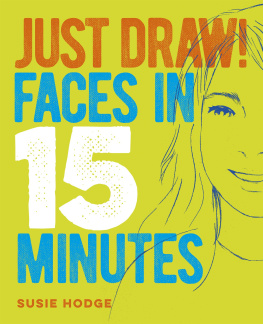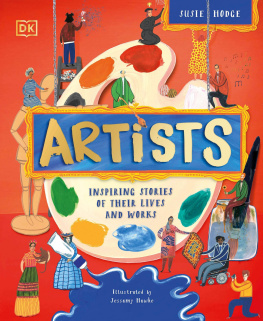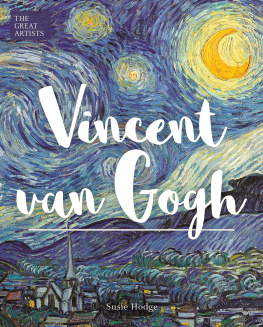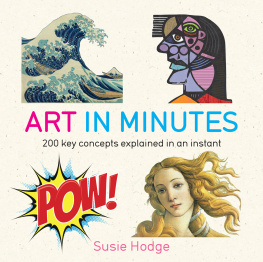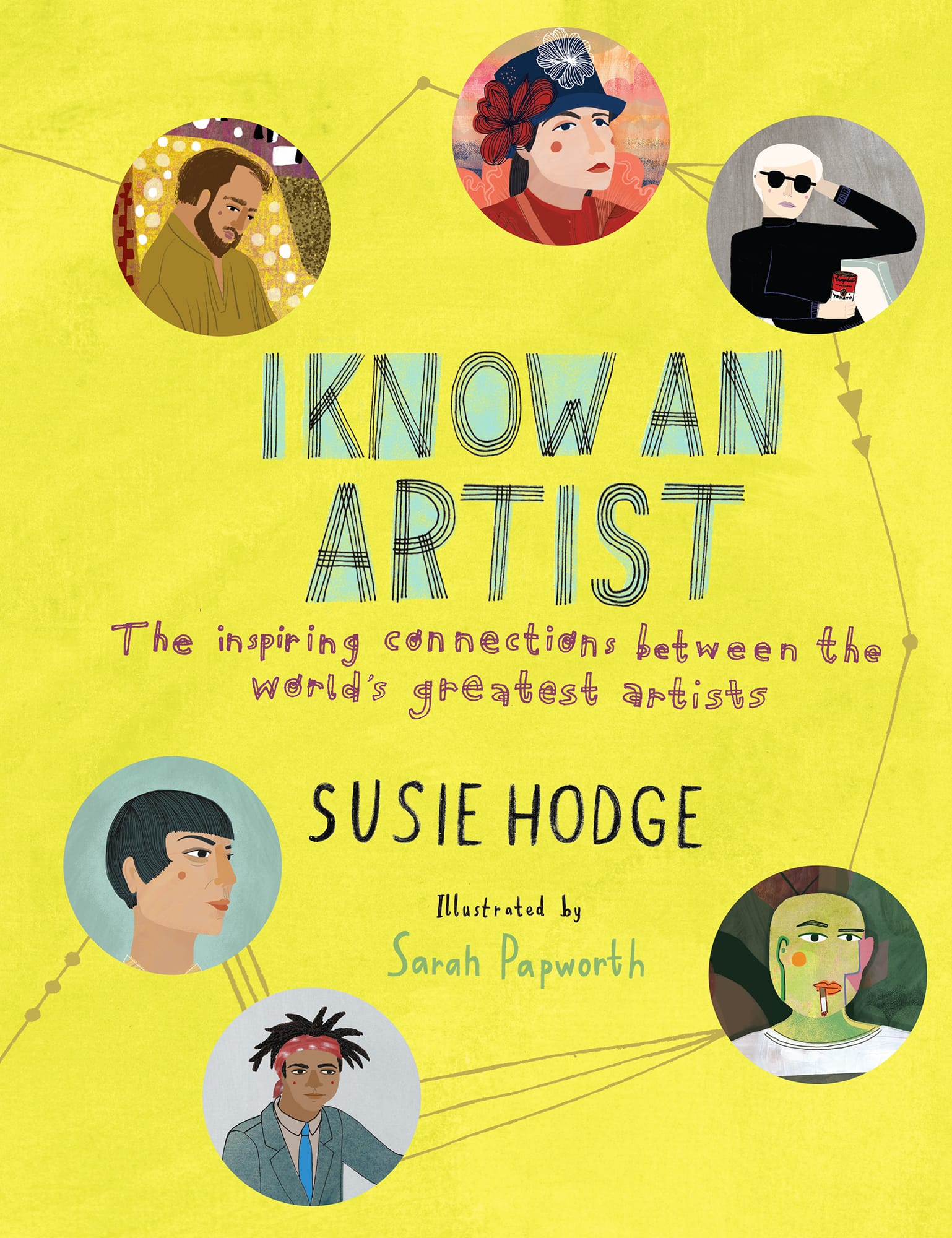Contents
Guide
Introduction
ARTISTS HAVE never worked in a vacuum. Every work of art is the culmination of many events, incidents and situations, and in one way or another, most of these are caused by associations or links with other people. These might be complete strangers or they could be known to the artists. Whatever their connection, all the artists in this book are linked by at least one other artist.
In all of our lives, we have countless links and connections with others that alter how we think or act, what we do, why we do it and where. Sometimes, these connections may seem irrelevant but end up being quite significant; at other times, they can seem important in the moment, but their effect is almost imperceptible. Many connections affect us in ways we could never anticipate, and nowhere are these things more apparent than in the lives of artists, for whom events so often manifest themselves visually through their work. One of the most fascinating aspects of art and art history is learning about these links and connections, and seeing how, why and where they occur, how they emerge and evolve into works of art or even entire art movements. For example, a chance meeting may change the way an artist views the world, uses a certain material or incorporates particular motifs into his or her work. A certain teacher may affect how a pupil works or who they admire. Then there are other types of connection: a critical review or a letter of encouragement; winning the same award, perhaps even decades apart; membership of a particular society; exhibiting together; being commissioned by the same patron; or having an affair with the same person. The possibilities are vast.
While this book is all about the connections, it is not a chronological story of those who influenced and those who were influenced. In fact, it is not chronological at all and it is not only about influences. Instead, within these pages, time flows forwards, backwards and sideways, and the artists explored are connected to each other in a whole host of ways. Here you will discover fascinating stories about famous artists and those less familiar. You will gain insights into the human side of many works of art and the personalities of those who made them, and you will see how great works ended up being made, either through a vague or a close link with another person or people. For example, you can read about the artist who inspired Rodins The Kiss and another who wrapped it in string; the artists who struggled in Montmartre, and the probable originator of abstract painting. (Hint: it wasnt Kandinsky.) The book is filled with stories about the artists support networks, influences and inspirations. There are those who are household names, such as Pablo Picasso, Henri Matisse and Frida Kahlo, and those who are less well-known. Many of the artists included reflect their own cultures and societies, but they also reflect other things beyond that, such as the times in which they lived or the art styles and methods they influenced, even decades later. Overall, there are eighty-four artists considered, who all worked from the end of the nineteenth century to the present day. Their connections are as varied as the art they produced.
Sarah Papworths vibrant and original illustrations bring all the artists and their stories alive, linking them together and creating their own unique world. These links are just a few of the thousands that have occurred and are still occurring in the art world, and that have helped to challenge and change the face of art over the past couple of centuries. I hope that the stories inspire you to go and see some of the artworks and to look at them with a fresh understanding and pleasure. Art is one of those things that rewards you: the closer you look, the more you see. After reading this book, hopefully you will see even more in the work of the artists featured.

ONE OF the founders of Impressionism, Oscar-Claude Monet (18401926) remained faithful to the movements aims throughout his life: painting en plein air, capturing fleeting moments and using colour to depict the effects of light. Even the name Impressionism came from the title of one of his paintings. As a teenager growing up in Le Havre on the Normandy coast, he began painting outdoors with Eugne Boudin (182498). At that time, although some artists made outdoor sketches or visual notes, most paintings were completed in artists studios. By painting directly in front of his subject, Monet believed he was capturing light and colour as accurately as possible, and using bright pigments, he rendered everything with bold, broken brushmarks. From 1874 to 1886, he helped to organise, and exhibited in, five of eight independent exhibitions with the artists known as the Impressionists. Although his style changed in later life, he always aimed to capture spontaneous, passing moments, representing the flickering sensations that our eyes naturally see. At first, his sketchy, seemingly unfinished paintings attracted ridicule and derision, but Impressionism later became one of the most significant art movements of the late nineteenth century. Because of his commitment to the movement, Monets colourful paintings earned him the epithet the father of Impressionism.
Throughout his life, Monet produced more than 2,000 paintings and 500 drawings, but initially he faced fierce family opposition. His father wanted him to join the family grocery and ship chandlery business, and his aunt would only support him in his artistic ambitions if he undertook conventional art training. After moving to Paris at the age of nineteen, Monet enrolled at a small studio that disregarded established teaching methods, where he mixed with the avant garde of the day. However, his family cut him off financially and he was often so poor that he could not afford to feed himself, let alone his wife and child. Despite the hostility towards him, Monet persevered. After more than twenty years, he achieved fame and financial success, and in 1883 bought a house in the village of Giverny outside Paris. By 1890, he was wealthy enough to buy a plot of land next to it. There, he employed six gardeners to build a garden and an enormous pond, which was filled with water lilies and spanned by a Japanese-style bridge. For the last thirty years of his life, the artist painted this untiringly in different lights and seasons.
Monet once told a journalist: I perhaps owe it to flowers for having become a painter. His paintings of flowers and gardens broke with artistic traditions and generally elevated the status of such themes. He especially liked to paint his own gardens, first at Argenteuil, then at Vtheuil, and finally at Giverny. Similarly inspired by nature, Anya Gallaccio (b.1963) has frequently made flowers a prominent subject. In the same way that Monet broke artistic boundaries with his monumental paintings of lilies, so Gallaccio creates installations consisting of huge expanses of actual flowers, as seen in preserve beauty (19912003).
Was particularly influenced by the painting Djeuner sur lHerbe by
EDOUARD MANET
Helped inspire the painting


